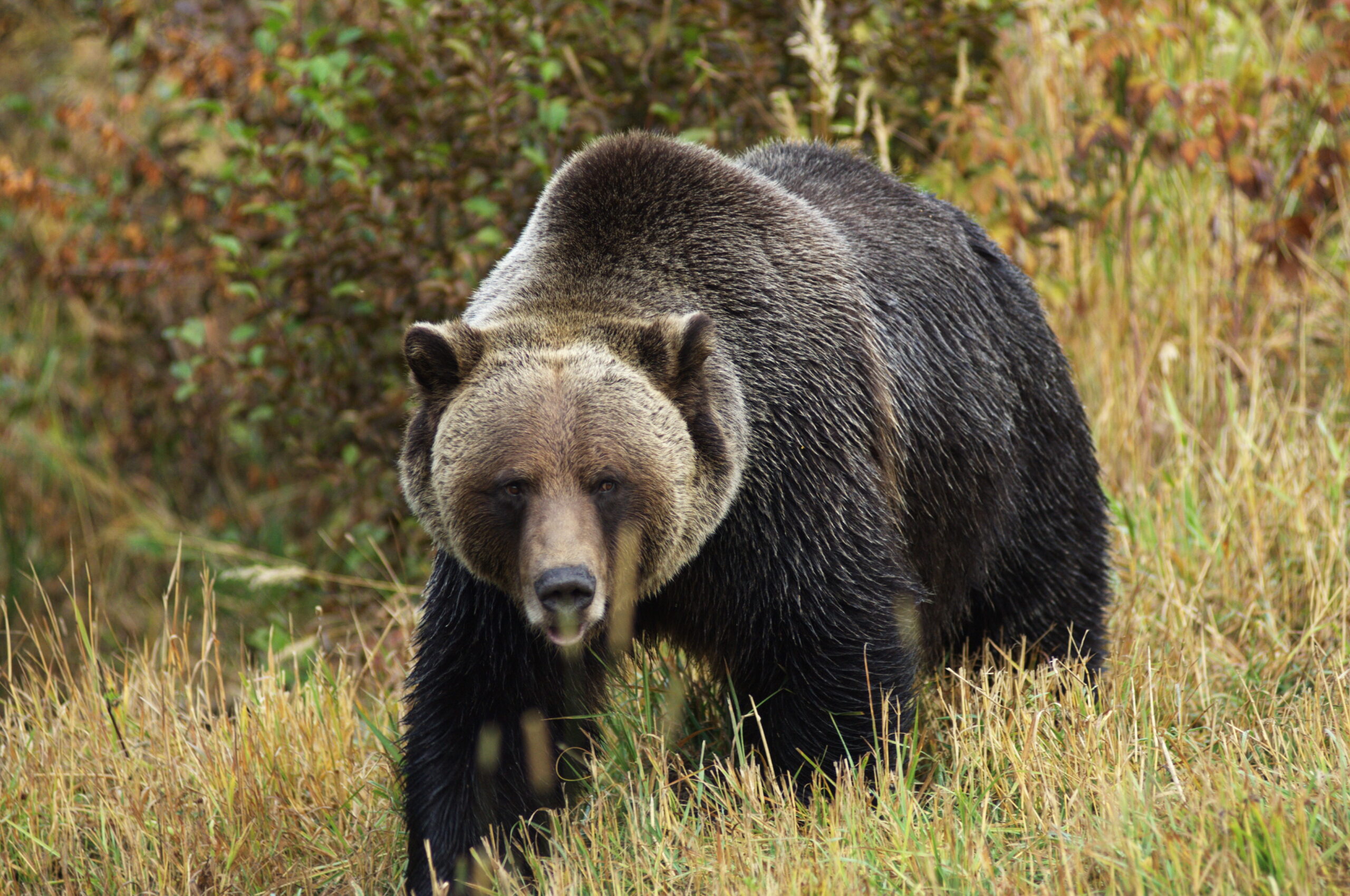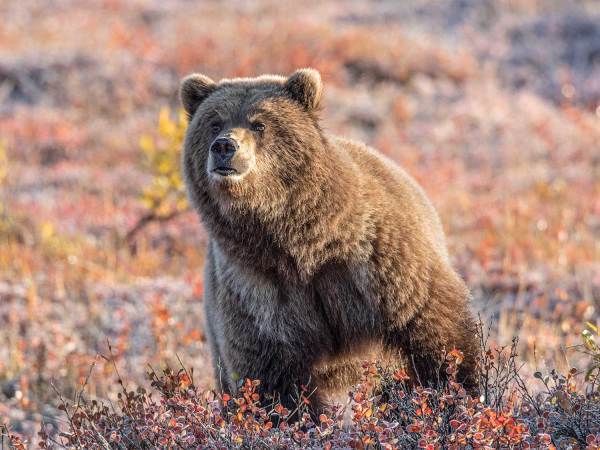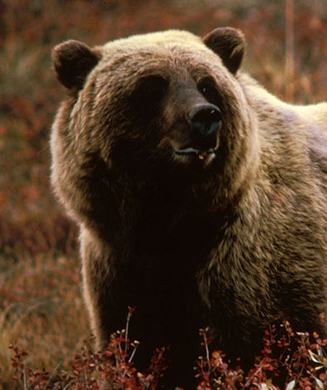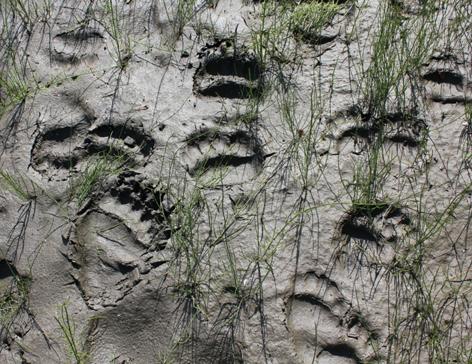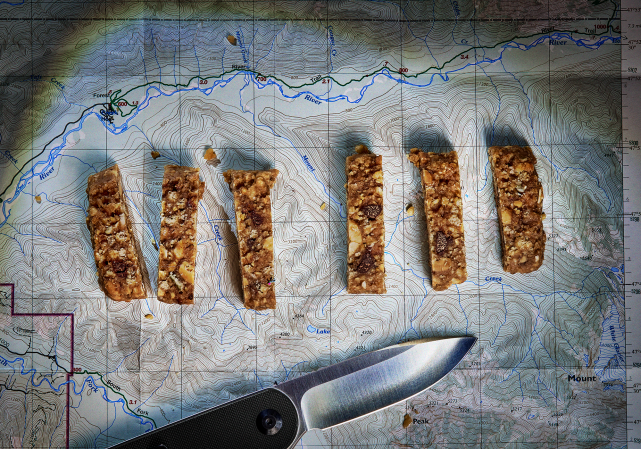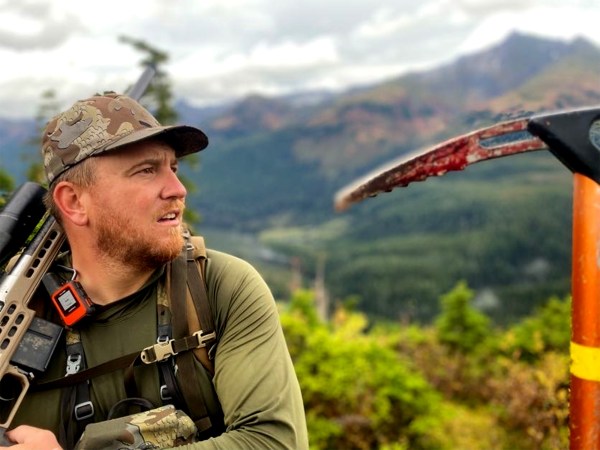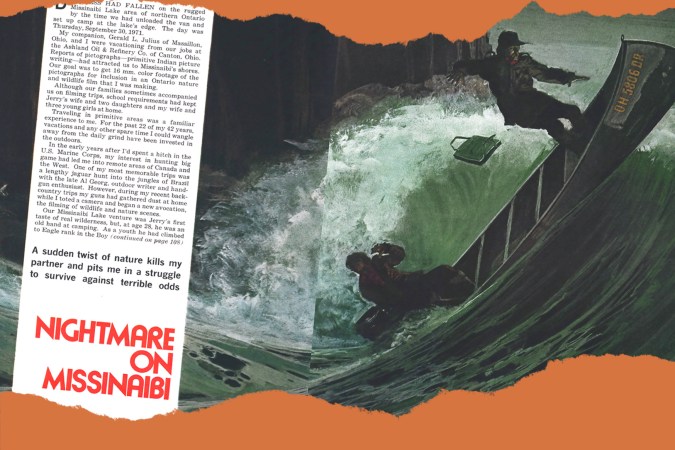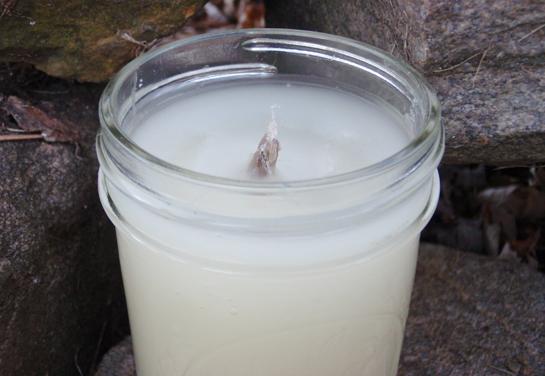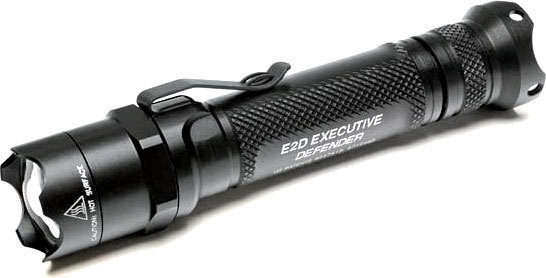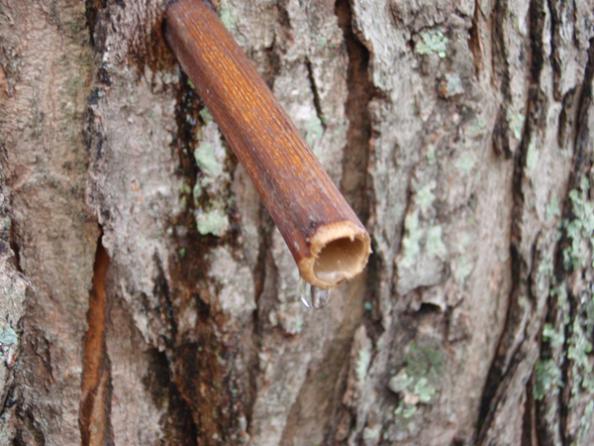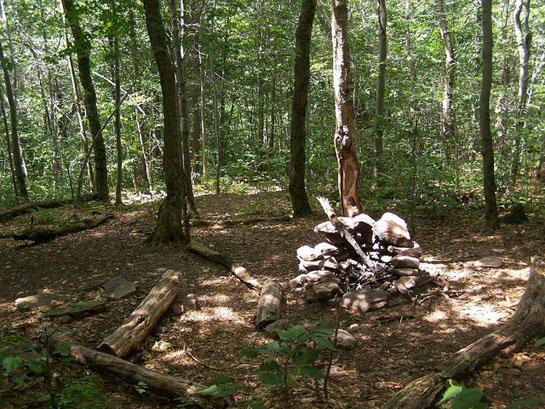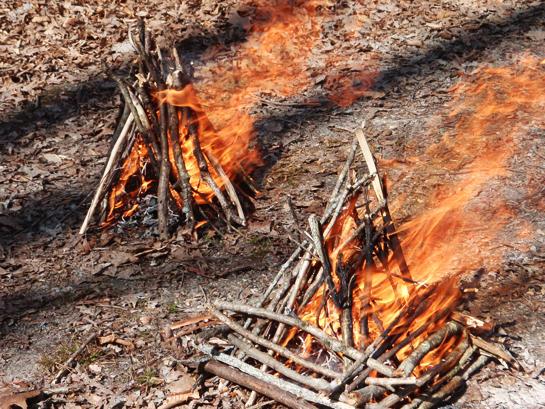Much like politics or religion, bear defense is a subject that will quickly segregate people into strongly defended ideological camps. For the majority of folks, it’s purely for entertainment purposes—like guys in their living room debating whether or not they would have made that Super Bowl winning catch they saw on TV. However, for hunters and anglers who live in or frequently venture into grizzly country, bear defense is very important.
The only certain thing about dealing with bears is that there are no certainties, but if you look to the folks who spend the most time around bears, you can learn to have the best chance at surviving an encounter.
Be Bear Aware to Prevent Dangerous Encounters
The hard truth about bear defense is that the most important things you can do are boring. In our heated debates, we all imagine ourselves stopping the bear, but of course not before he gets just close enough to make it an exciting story. The fact of the matter is, if it comes down to that, things have gone terribly wrong.
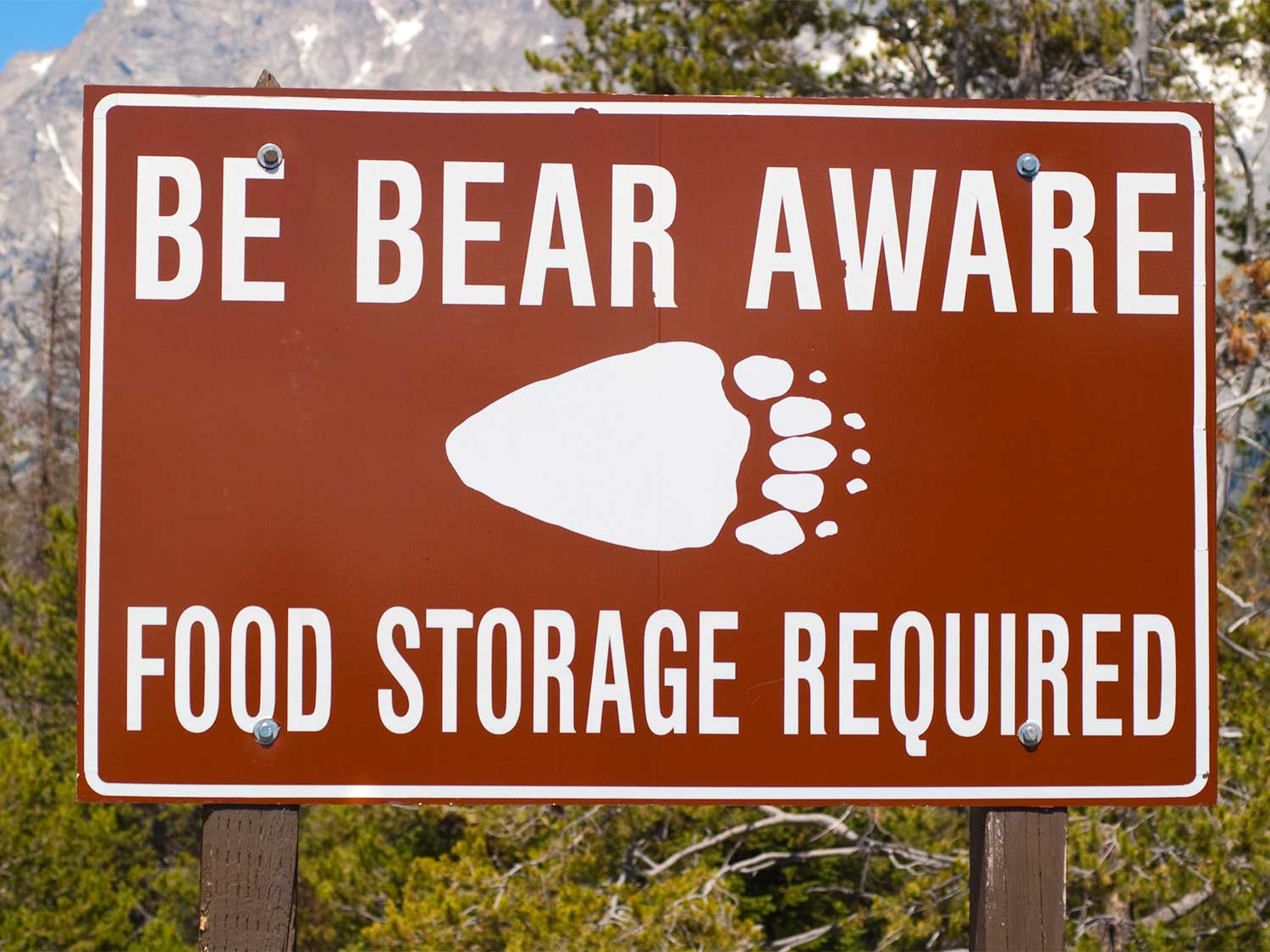
The best way to deal with a dangerous encounter with a bear is to avoid it in the first place. We’ve all heard the phrase “be bear aware,” and likely most of you are as annoyed with it as I am, but it is the best way of avoiding a dangerous situation altogether. How you conduct yourself in bear country and (think: proper food and meat storage), will almost always play a larger role in your safety than your ability to stop a charge with lethal or non-lethal force.
That being said, the reason that people discuss bear defense tools so passionately is that, for a variety of reasons, bear attacks still occur. Sometimes it’s due to a lapse in human judgment, and sometimes it’s just bad luck—either way, we all need to be as prepared as possible. Bear defense tools can be segregated into tiers, or levels of force, and it’s up to you to pick the one that best suits your needs. Consider the areas you’ll be in, the activities you’ll be doing, and the frequency of those visits to help gauge the likelihood of a bear encounter and the need to use force.
Essential Bear Defense Tools
Some of the most important things to remember about bear defense and bear defense tools is that every bear is different, every encounter or attack will be different, and there are no guarantees with any bear protection tool that you will survive. Do your best and choose wisely, but keep in mind that we live in an imperfect world, and sometimes the bear is just going to get you. Every encounter is a roll of the dice, and the best thing you can do is make a choice that loads them in your favor.
Bear Spray
Bear spray, a more powerful non-lethal pepper spray, has become a very popular and arguably effective means of protection from an aggressive bear. It’s lightweight, affordable, and relatively easy to use. Most of the time, it is highly effective, but there are several examples of spray failing to stop a determined bear.
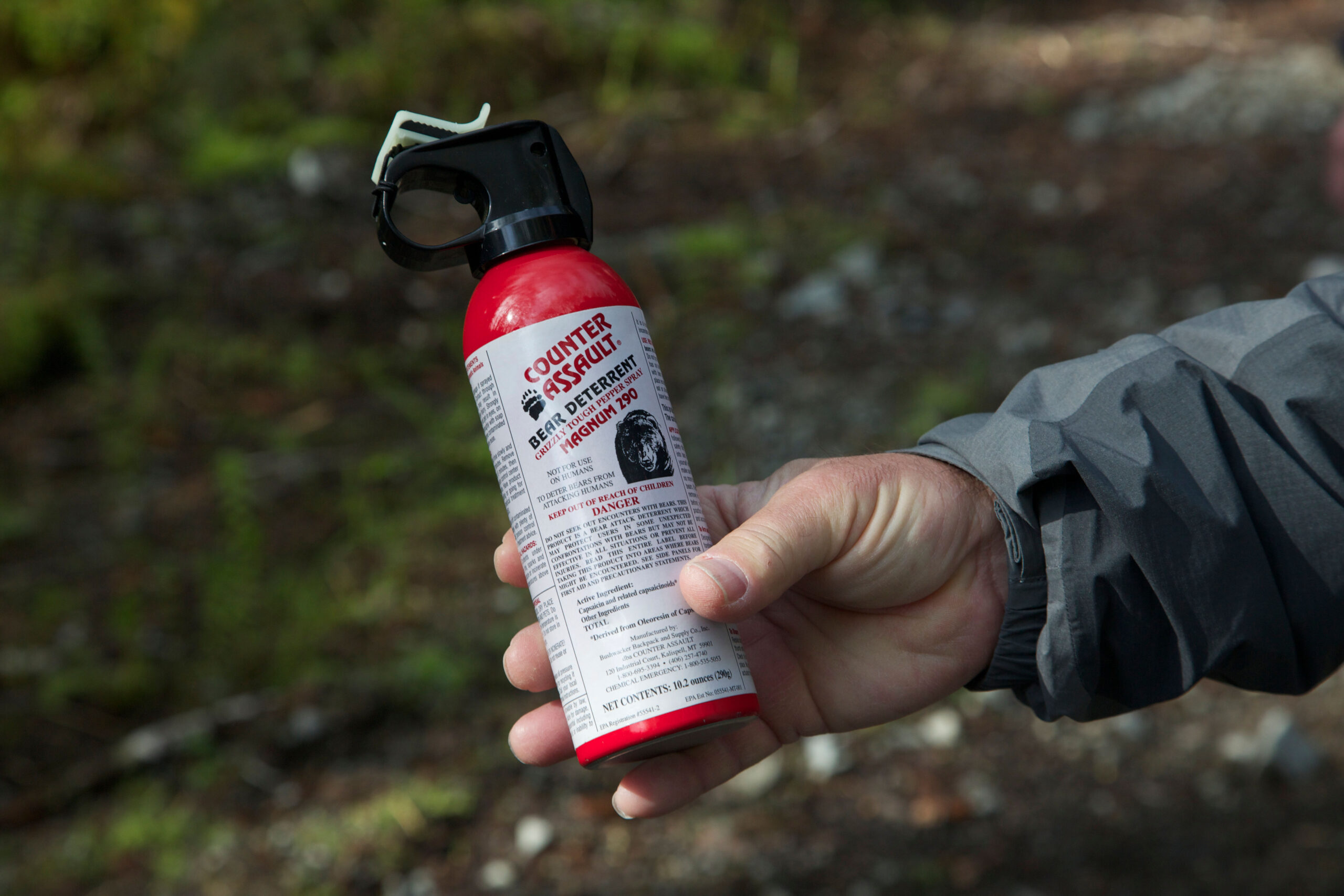
One story that comes to mind has to do with an acquaintance who was hunting black bears over bait from a tree stand. Often black bears are just curious, and some minor hazing will send them about their business, but that day, one bear got a little too close. The bear climbed into this guy’s tree, forcing him to spray it in the face at literally 2 feet. The bear just coughed and huffed and then bit him on the boot. Luckily, the bear didn’t bite all the way through to his foot. It only yanked the boot off before diving out of the tree and running away.
There are several other documented accounts of attacking bears not being deterred, and keep in mind that with an unfavorable wind, or in thick woods or brush, you can easily become a victim of your own spray. If you decide to carry bear spray, get an extra can to practice with so you know what to expect, and practice carrying, drawing, and firing it. It doesn’t do any good if you cannot carry it all the time comfortably, and access it quickly.
Heavy Rifles
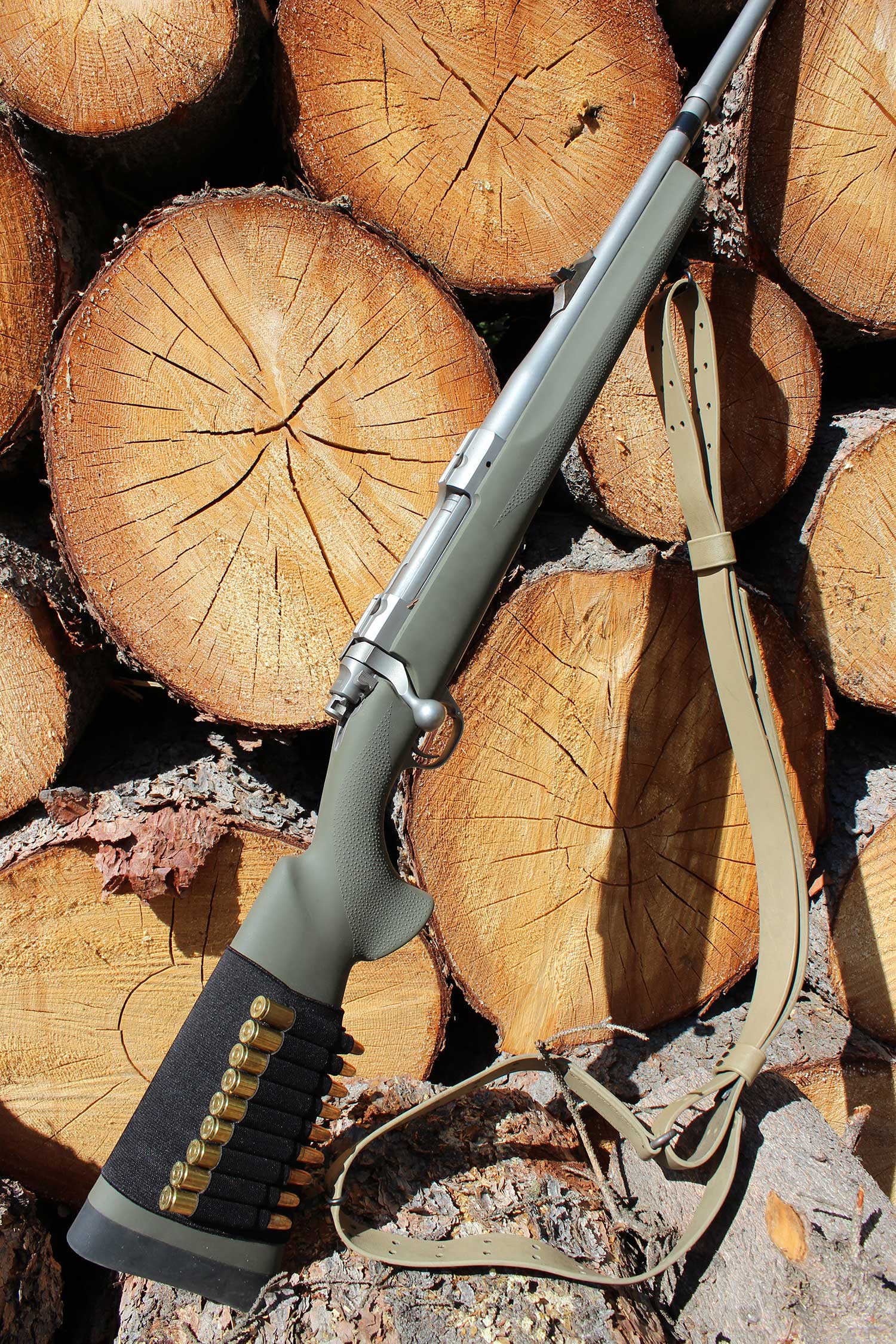
When we’re talking about lethal means of bear defense, let’s just start at the top. All you have to do to get a picture of an adequate bear-stopping rifle is look at what seasoned brown bear guides here in Alaska use to back up their clients. There’s just flat-out nothing that compares to a big rifle when it comes to stopping bears. Under the right circumstances, a pissed-off bear can be incredibly difficult to stop, and the combination of energy, penetration, and catastrophic damage that a big rifle delivers is the best you can ask for.
How big is big? Most standard big game rifles in the .30 to .338 caliber range fall short of what I’m talking about here. A hot-loaded .30-06 with 180- or 220-grain bonded bullets in the hands of a cool-headed shooter will do just fine for hunting, but for a dedicated bear defense rifle, you’ll want to go bigger. More typically, on the shoulders of guides who are hunting the biggest bears in the world, you’ll find what I’m calling big rifles. When I say big rifles, I mean we start with the .375 H&H and work on up to the .416s and .458s. Even though there are no guarantees when it comes to putting down a charging bear, these rifles can generally be depended on to stop one in a hurry.
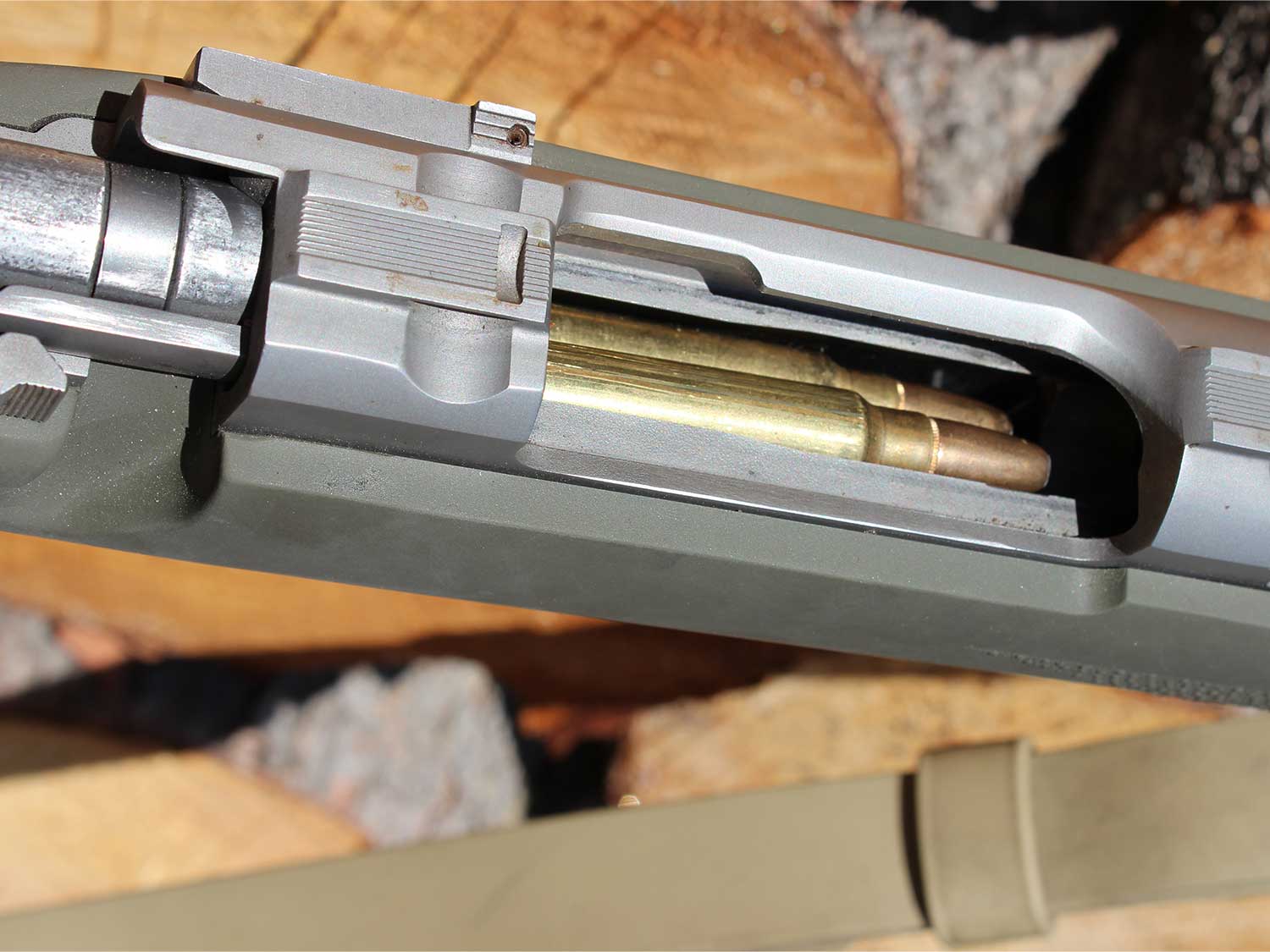
As far as lethality is concerned, a big rifle is your best measure, especially if you’re spending a lot of time tracking wounded bears, going to bait stations, or crawling through alder thickets. If you assess the situation and feel that a potential encounter is likely, I suggest selecting something along these lines, but if you’re simply going about your day-to-day, and not in situations that get your hackles up, you probably don’t need to endure the inconvenience of toting a rifle around.
Ideal Heavy Rifles for Bear Protection
Look for the biggest caliber you can shoot well in a rifle with a controlled-feed action like the Winchester Model 70 Safari Express, or the Ruger Guide Gun. While big bore rifles are ideal, even a .308 will work.
The velocity, penetration, and damage will be head and shoulders above any handgun as long as you pick some good bonded or monolithic bullets like Federal Trophy Bonded or Barnes TSX.
Shotguns
Probably the most widely promoted means of bear defense (for a good reason) is a shotgun. A shotgun with slugs is basically a poor man’s rifle. They are much cheaper than a good controlled-feed dinosaur rifle, yet still reliable. They have a good capacity for ammunition, and anyone familiar with a couple of styles can easily adapt to just about any shotgun out there. A shotgun is typically what you’ll find issued to government agencies as a bear-defense weapon, and they have been used quite successfully to deter attacks.
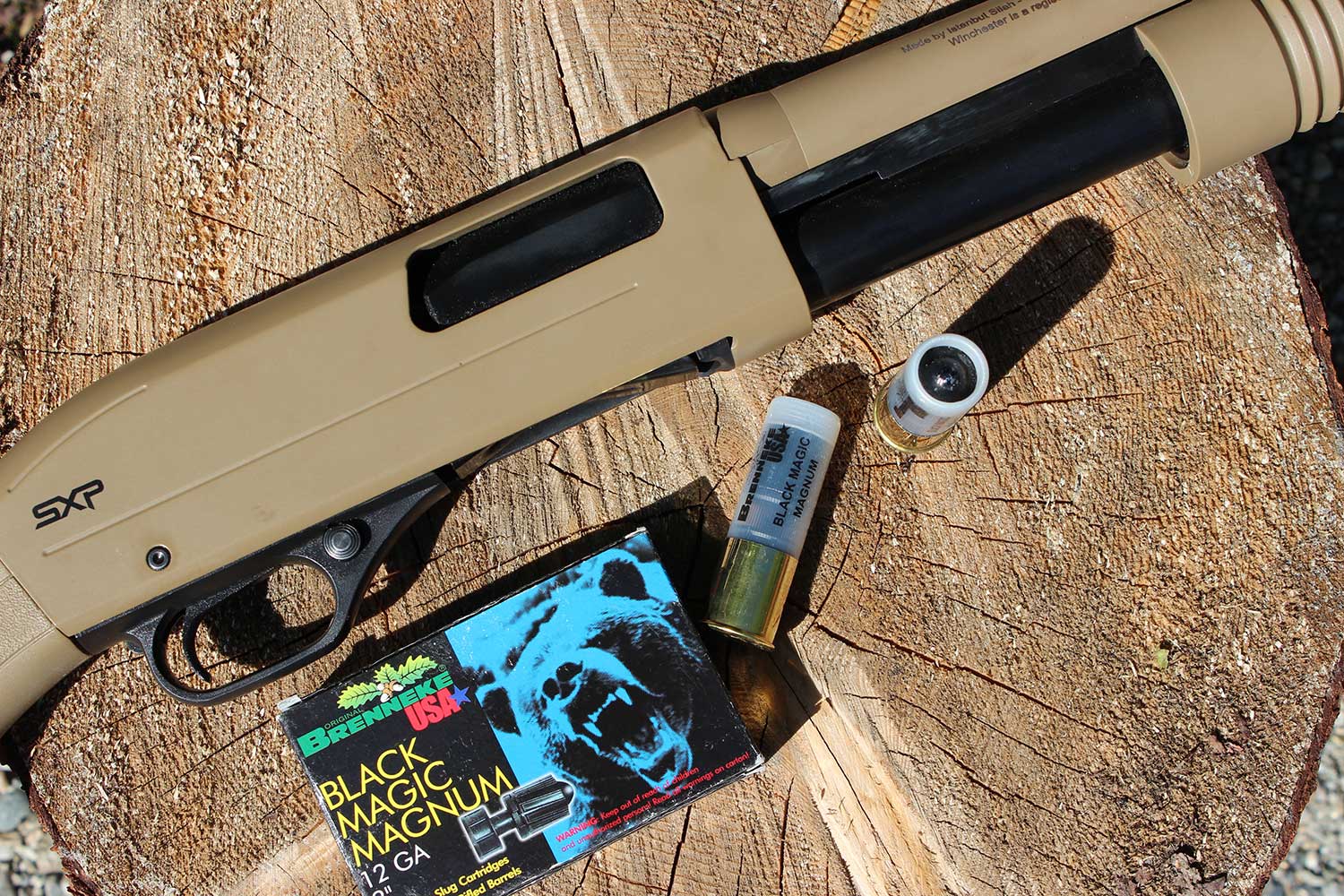
A 12 gauge’s effectiveness can vary tremendously based on the ammunition used. You should be using slugs, and not just your average deer slug but hot ones, and you can forget about buckshot. Your average deer slugs might work, but they’re nowhere near as effective as something like a Brenneke Black Magic magnum slug.
The issue I have with the 12 gauge is that I’m personally not convinced of its effectiveness. Everyone takes it for granted because that’s what they are told to carry, but for about the same recoil as a .375 H&H, a hot slug performs more like a big-bore handgun cartridge than a rifle. It’s essentially a big hunk of led going at medium speed, punching a clean hole. I didn’t question the 12 gauge slug as an option until a buddy had several poor experiences on a few black bears and one brown bear with them. According to him, the bears just “soaked them up,” and it took multiple shots to finally put them down. This was also reinforced by an Alaska State Fish and Game worker who had been assigned to a helicopter predator control operation targeting grizzly bears in a specific area. Even top-end slugs did not impress him with their performance and yielded poor penetration and damage.
Take all of that with a grain of salt though. I think that a shotgun is still a perfectly adequate defense tool when used with the right ammunition, and for some folks, it is the best option. They make a great camp gun, are easy to operate, and are easier to shoot more accurately than a handgun. It’s a good choice for situations where you’re in an area with a lot of bears, and there is a possibility of seeing some, but a dangerous encounter is unlikely.
Ideal Shotguns for Bear Protection
For a bear defense shotgun, go with an 18-inch barrel and a reliable pump action. The Remington 870, Mossberg 500, and Winchester SXP are all offered in versions with shorter barrels and extended magazines. Buy premium magnum slugs like the Brenneke Black Magic, and forget about the new birds-head grip short shotguns.
Handguns
In the lethal category, handguns come in last, yet they are the most contentious and hotly debated tools for bear defense. To put it bluntly, any handgun is horribly inadequate compared to just about any high-power rifle when it comes to stopping a bear on the spot. There are some impressively powerful handgun cartridges and platforms out there, but they still aren’t rifles. Handguns are essentially just punching holes. Some of them punch slightly bigger holes than others, but none of them really have the velocity to do the catastrophic damage that a rifle can. Great penetration can be achieved with a handgun by using hard-cast or monolithic solid bullets. But because of velocity limitations, to get proper penetration, you usually will have to sacrifice the dramatic wound cavity that expanding bullets will give you.
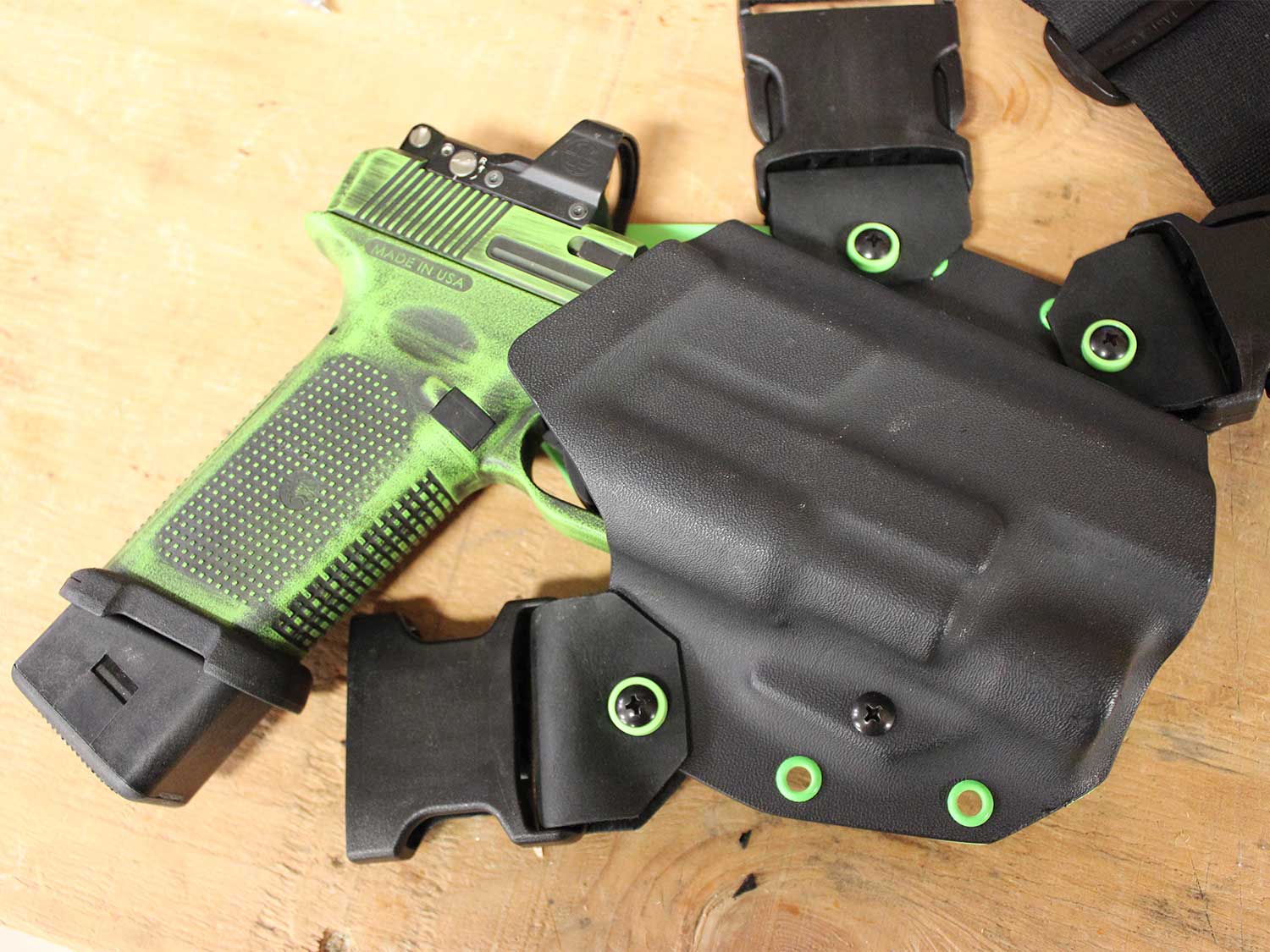
In a handgun hunting situation, this is just fine, as a well-placed shot with a big handgun and solid bullet will absolutely get the job done. However, in a defense situation, we are talking about stopping a charge or otherwise aggressive bear in one of two ways—either killing or incapacitating them with authority or giving them enough trouble to change their mind. You won’t know which of those will work, so the former is the priority. The problem is that given the limited destructive capability of any handgun cartridge, shutting a charging bear down instantly can only be reliably done one way, and that’s a brain shot. At times, the right body shot might spin them off course, or just the right one might drop them right into rigor mortis, but bears that have their adrenaline pumping are incredibly difficult to stop, and although hitting the vital organs will kill them, they can still have time to do plenty of damage. Any handgun is still just a handgun.
Considering that, your gains in selecting one of the bigger revolvers (.454, .460, or .500) are going to be relatively minimal compared to the big rifles that are actually adequate. You want a cartridge and bullet that will penetrate well and punch through a bear’s skull, which is not as difficult as lore might imply. Once you have that, you will see diminishing returns as you go bigger and bigger.
Another major consideration is how well you can shoot your handgun. Given the lackluster power, if you want to have a good chance at stopping a bear with a handgun, you need to be able to shoot quickly and accurately under stress. If you can shoot the big revolvers well, more power to you, but personally, having used both, I much prefer a smaller revolver in .357 mag or a semi-auto in 10mm. Both have been used multiple times as effective bear defense calibers, and even the 9mm has proven to be an adequate cartridge in the hands of a good shooter with the right ammunition. Another benefit of these smaller calibers is that practice ammunition is much more affordable, and there is no substitute for trigger time when it comes to handgun proficiency. I can’t think of anyone I know who owns or carries a revolver larger than a .44 magnum and shoots more than one box of ammo per year through it. Many of them haven’t been fired in years.
Ammunition capacity is a debatable point when it comes to a bear defense handgun, and it ultimately boils down to the individual situation. Most big revolvers hold five or six rounds. A factory double-stack 10mm will usually hold 15 rounds. Sure, in some situations, you’ll only have time to get one shot off, sometimes zero, but there are also very real possibilities of needing more than five or six rounds in the gun. I’ve seen several brown bears take between six and 13 rounds of .375 H&H before finally expiring. Often, even with rifles, when bears are hit in the body, they will spin, sometimes recovering and continuing on their path, but it usually slows them down, giving more time for additional shots. It’s incredible how fast ammo can run dry, and if faced with that situation, I want to be able to pump as many bullets into that bear as fast and accurately as I can.
Finally, and probably the most important thing to keep in mind when using a handgun as a defense method is actually carrying it. It’s easy to become complacent and quit carrying your gun. While there are many variables that you have zero control over, you won’t be able to shoot a bear if you don’t have your handgun on you, loaded, and ready to go.
You should only be using your handgun as your primary defense tool in situations where bear trouble is very unlikely. If a handgun is all that stands between you and getting chewed on, things have gone very, very wrong, and it’s basically just better than nothing. Carry your handgun in situations where a bear attack is the last thing you would expect.
Read Next: What’s the Best Back Up Bear Gun: A Magnum Revolver or a 10mm Auto?
This is a major drawback to big revolvers. They are a pain to have on you all the time. Sure, if you’re John Wayne, and just stand around looking pretty with that big iron, that’s great, but when you’re hiking, camping, and going about whatever tasks you need, it is much easier to carry a smaller handgun. People here in Alaska are going that way in droves. There are chopped down models of big revolvers, that are easier to carry; however, they are still heavy, give you profound recoil, and send a good portion of the unburned powder out the barrel, losing much of the performance that the calibers would have in a un-modified model. Standard-sized autoloaders are just flat-out much easier and more comfortable to carry, with fantastic and convenient holster options.
An often-overlooked benefit of many polymer autoloaders is a built-in rail for mounting a tactical light. I’m frankly, surprised that I don’t see them used more often, as many bear encounters occur after dark, especially if you have fresh meat hanging around camp. I don’t care how good you are, you’re not going to be fast or very accurate with your .454 Casull in one hand and a flashlight or kerosene lantern in the other. A Streamlight or Surefire is bright enough to give you plenty of visibility and actually shoot well if you need to.
Ideal Handguns for Bear Protection
For a shooter-friendly defensive handgun that has affordable practice ammo, the 10mm is hard to beat. There are lots of options these days, but for stock pistols, the Glock 20 and Springfield Armory XDM 10mm are great options.
It is very important to select your carry ammo carefully, and you will want non-expanding, deep-penetrating bullets, such as Buffalo Bore hard-cast, or Lehigh Defense Xtreme Defense bullets loaded by Underwood Ammo.
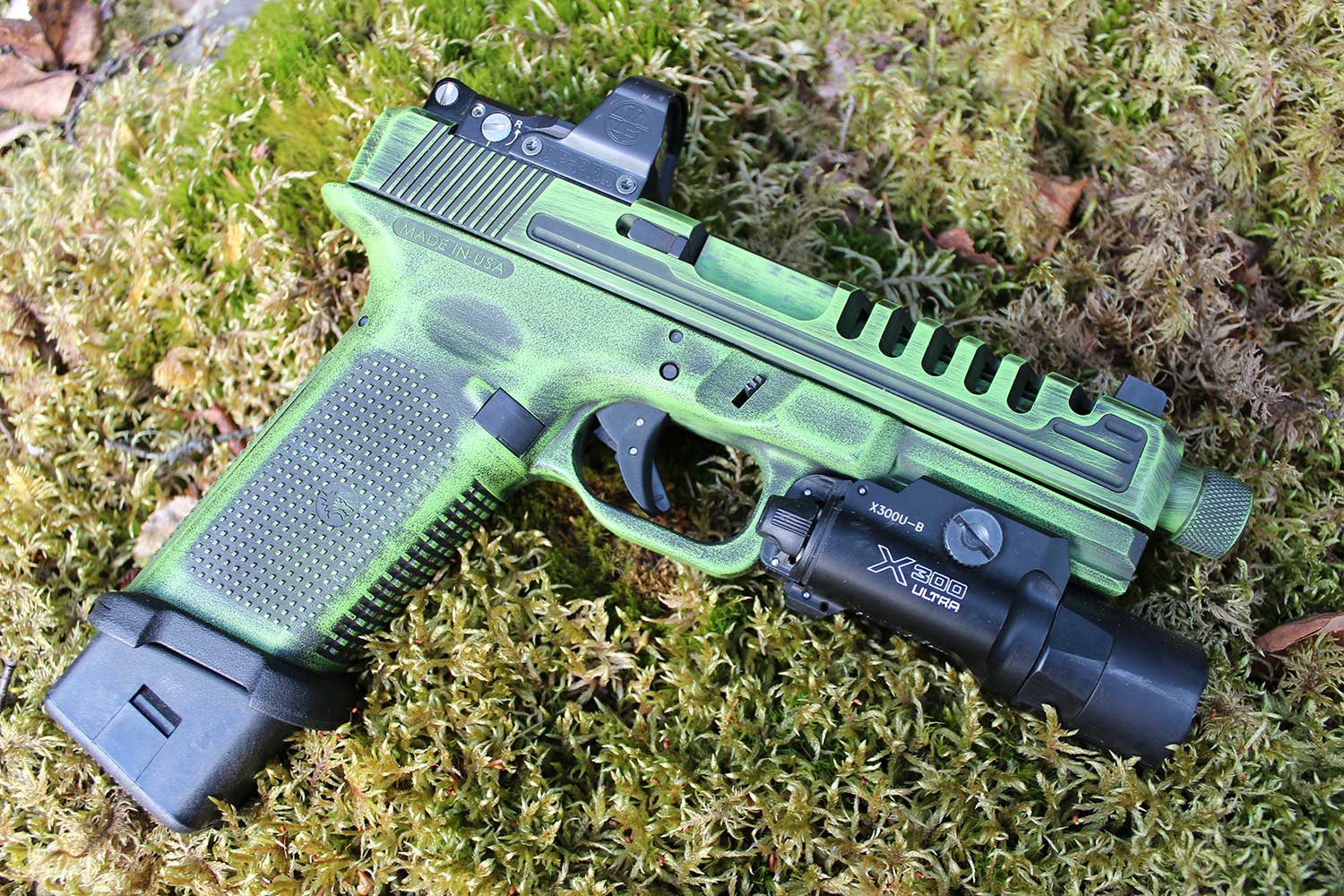
My Personal Ultimate Bear Defense Pistol
Lone Wolf Distributors Timber Wolf Large. The TWL features an improved Glock-style frame and slide, but highly customizable. Other key features:
- Aggressive slide cut pattern for reduced weight and easy front-slide cocking
- Cut for a red dot optic and tall front sight
- Arredondo magazine extension (20 +1 capacity)
- Surefire X300 Tactical light
- Kydex Chest Holster: Scout, made by Northwest Retention Systems.

